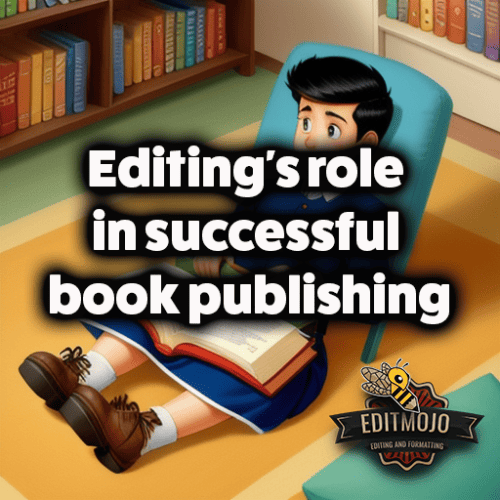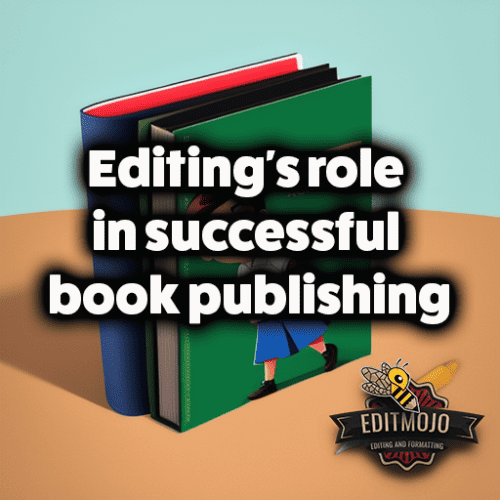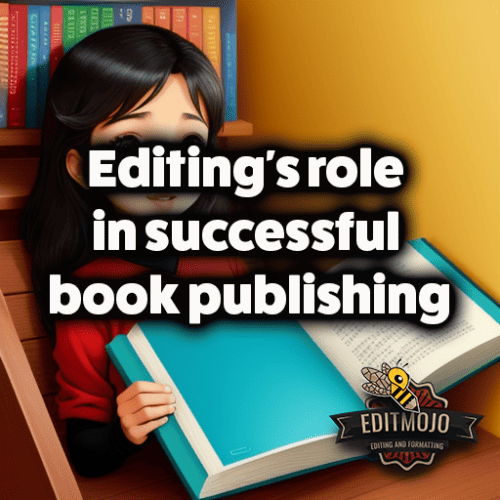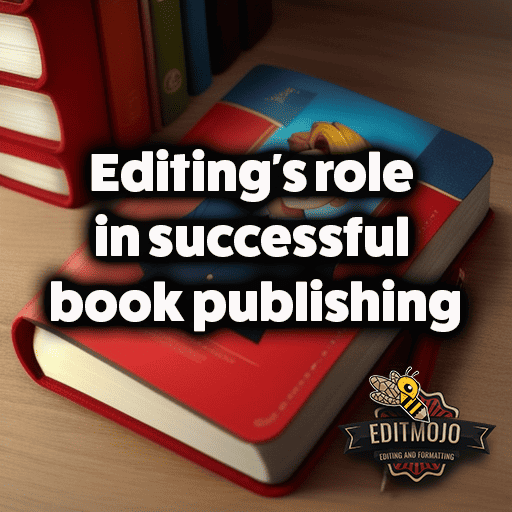Editing’s role in successful book publishing
Editing’s role in successful book publishing. Just as an uncut diamond needs careful shaping to transform into a dazzling gem, a raw manuscript requires meticulous editing to emerge as a captivating book. In the world of book publishing, the editing phase is a crucial stepping stone, often underappreciated but immensely significant. This post aims to spotlight the behind-the-scenes heroes of the publishing process – the editors. From manuscript shape-shifters to guardians of grammar, let’s delve into the editing world to understand how it’s truly the secret ingredient in the recipe for a successful book.
Key Takeaways Table
| Section | Key Takeaway |
|---|---|
| Understanding the Basics of Editing | Editing involves refining and correcting a manuscript for better clarity, readability, and quality. The process includes developmental, substantive, line, copyediting, and proofreading. |
| Role of Editors in Crafting a Compelling Narrative | Editors act as the first audience of a manuscript, helping to refine plot, pacing, and character development. They play an instrumental role in shaping the story to appeal to readers. |
| The Technical Aspects of Editing | Editors ensure consistency in language and formatting, acting as guardians of grammar, punctuation, and style. They also use digital tools to streamline the editing process. |
| Collaborative Aspect of Editing | The relationship between author and editor is one of collaboration and sometimes conflict. Constructive criticism and feedback from editors can greatly enhance the final book. |
| Editing and Marketability of a Book | Editors contribute to the commercial success of a book by guiding authors to cater to their target audience better. |
| The Unseen Editors: Role of Copy Editors and Proofreaders | Copy editors and proofreaders are essential in eliminating errors and enhancing readability, ensuring the author’s voice remains consistent throughout the book. |
| The Future of Editing in Book Publishing | The editing landscape is evolving with the rise of self-publishing and AI-based editing tools, although the human touch of professional editing remains irreplaceable. |
Understanding the Basics of Editing
What is Editing?
At its core, editing is the process of revising and correcting a manuscript to improve its clarity, readability, and overall quality. But if we dive deeper, editing is much more than merely catching typographical errors or fixing punctuation. It’s about understanding the soul of a story, knowing the author’s vision, and making sure that vision comes across effectively to the readers.
Types of Editing
Just as a prism refracts light into different colors, the editing process too has distinct layers: developmental editing, substantive editing, line editing, copyediting, and proofreading. Each layer, or type, serves a unique purpose, ensuring the manuscript evolves into a polished and engaging book that readers can’t put down. A comprehensive understanding of these editing types can help you navigate the maze that is the publishing process.

Role of Editors in Crafting a Compelling Narrative
Editors: The First Audience
Editors are the manuscript’s first audience, and their role is invaluable. They wear many hats – they’re detectives hunting for plot holes, therapists analyzing character motivations, and architects refining the narrative structure. By critiquing the story from a reader’s perspective, editors help authors transform a promising draft into a riveting book.
The Art of Refinement
Consider the iconic relationship between author F. Scott Fitzgerald and his editor, Maxwell Perkins. Perkins’ insightful suggestions played a significant role in shaping Fitzgerald’s novel “The Great Gatsby” into the literary masterpiece it is known as today [^1^]. Editors, much like Perkins, work closely with authors to refine plot, pacing, and character development, ultimately enhancing the book’s appeal.
The Technical Aspects of Editing
Maintaining Consistency
Editors are also sticklers for consistency. Whether it’s maintaining a character’s hair color throughout the novel or ensuring the correct usage of the Oxford comma, editors ensure a smooth reading experience. They’re like quality control experts, ensuring that the finished product is up to standard.
Tools of the Trade
In the digital age, editors also leverage tools like Grammarly and ProWritingAid[^2^], which assist in catching minor grammatical errors, repetitive phrases, or inconsistencies in tense, thereby streamlining the editing process.
Collaborative Aspect of Editing
The Author-Editor Relationship
The relationship between an author and an editor is a delicate dance of collaboration and, sometimes, conflict. However, it’s this creative tension that often results in an engaging book. A great example of this is the collaborative relationship between author Stephen King and his editor, Bill Thompson, who persuaded King not to discard the manuscript of “Carrie,” which later became King’s breakthrough novel[^3^].

Editing and Marketability of a Book
The Business Side of Editing
Editors not only hone the creative aspects of a book but also contribute to its marketability. They have a keen sense of the market and reader preferences, guiding authors to cater to their target audience better. Take, for instance, the “Harry Potter” series. Editor Barry
Cunningham’s vision was instrumental in shaping J.K. Rowling’s initial manuscript into a book series that resonated with millions of readers worldwide[^4^].
The Unseen Editors: Role of Copy Editors and Proofreaders
The Final Line of Defense
The unsung heroes of the publishing world, copy editors and proofreaders, play a vital role in the final stages of book production. They run a fine-toothed comb through the text, ensuring it’s error-free and maintains the author’s voice. They’re the final line of defense, catching any overlooked typos or errors before the book goes to print.
The Future of Editing in Book Publishing
Navigating the Digital Landscape
As we move further into the digital age, the landscape of editing is evolving. The rise of self-publishing platforms and AI-based editing tools are reshaping the traditional role of editors. While these advancements offer exciting possibilities, the human touch of a professional editor remains irreplaceable. After all, no software can replicate an editor’s intuitive understanding of narrative rhythm or character development.

Conclusion (Editing’s role in successful book publishing)
In the grand theatre of book publishing, while authors may be the stars, editors are the dedicated directors, diligently working backstage to make the show a success. They’re instrumental in transforming a manuscript from ‘good’ to ‘unforgettable’, playing a crucial role in every successful book’s journey. As aspiring authors, embracing this editing process, with all its criticisms and suggestions, is the surest way to refine your craft and give your book the best chance at success.
In the words of Stephen King, “To write is human, to edit is divine.”[^5^]
[^1^]: Maxwell Perkins: Editor of Genius
[^2^]: Best Editing Tools for Writers
[^3^]: Stephen King and Bill Thompson
[^4^]: Barry Cunningham and the discovery of Harry Potter
[^5^]: Stephen King Quotes on Writing
Top Five Questions and Answers
- What is the role of editing in book publishing?
- Editing is crucial in refining and correcting a manuscript to improve its clarity, readability, and overall quality. It helps in shaping the narrative, ensuring consistency, and enhancing the marketability of the book.
- What are the different types of editing in book publishing?
- There are five main types of editing: developmental editing (big picture focus on story and structure), substantive editing (in-depth editing at paragraph level), line editing (focus on sentence structure and flow), copyediting (grammar, punctuation, and consistency), and proofreading (final check before publishing).
- How does editing contribute to the commercial success of a book?
- Editors have a keen understanding of the market and reader preferences. They guide authors to better cater to their target audience, thereby enhancing the book’s appeal and increasing its potential for commercial success.
- What is the role of copy editors and proofreaders?
- Copy editors and proofreaders play a crucial role in the final stages of book production. They go through the manuscript meticulously to catch any overlooked errors, ensure consistency, and maintain the author’s voice.
- How is the future of editing shaping up with the advent of digital technology?
- Digital technology has given rise to self-publishing platforms and AI-based editing tools, which are reshaping traditional editing. However, despite these technological advancements, the human touch and intuition of a professional editor remain irreplaceable.
